Want to solve climate change? Open more land to solar, industry leader says
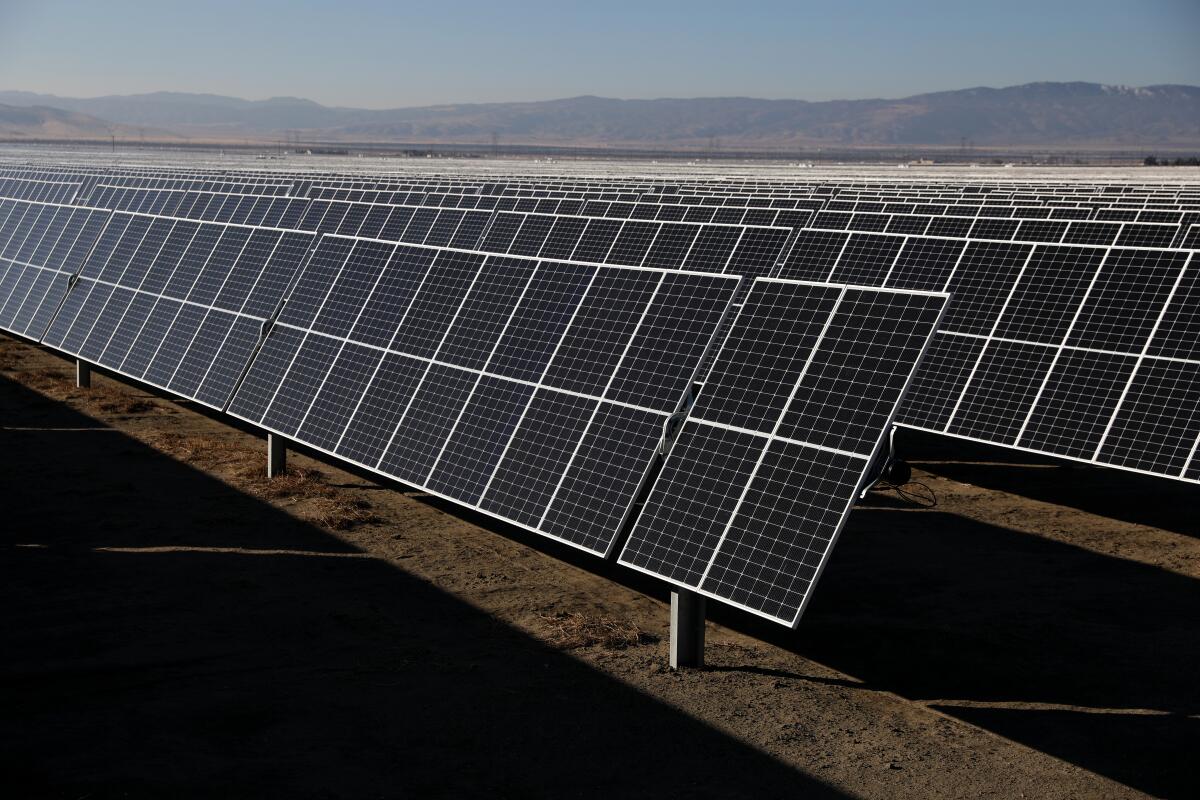
- Share via
This is the Dec. 1, 2022, edition of Boiling Point, a weekly newsletter about climate change and the environment in California and the American West. Sign up here to get it in your inbox.
Ending the climate crisis will almost certainly require putting solar panels and wind turbines on huge amounts of land — some of it valuable wildlife habitat, some of it now used for food production, some of it held sacred by Indigenous tribes.
It’s an uncomfortable reality backed up by robust scientific research — and the starting point for many efforts to identify the least damaging places to build renewable energy infrastructure. I wrote recently about one of those efforts, a Nature Conservancy study with the optimistic conclusion that the American West can generate enough clean power to replace fossil fuels, even if some of its most ecologically important landscapes and best farmlands are placed off limits to solar and wind projects.
The study represents a common way of thinking about renewable energy planning, known as “smart from the start.” The idea is to push development to lower-conflict areas, helping projects get approved faster while also protecting the natural world.
As far as Shannon Eddy is concerned, it’s a good strategy in theory — but in practice, it can leave a lot to be desired.
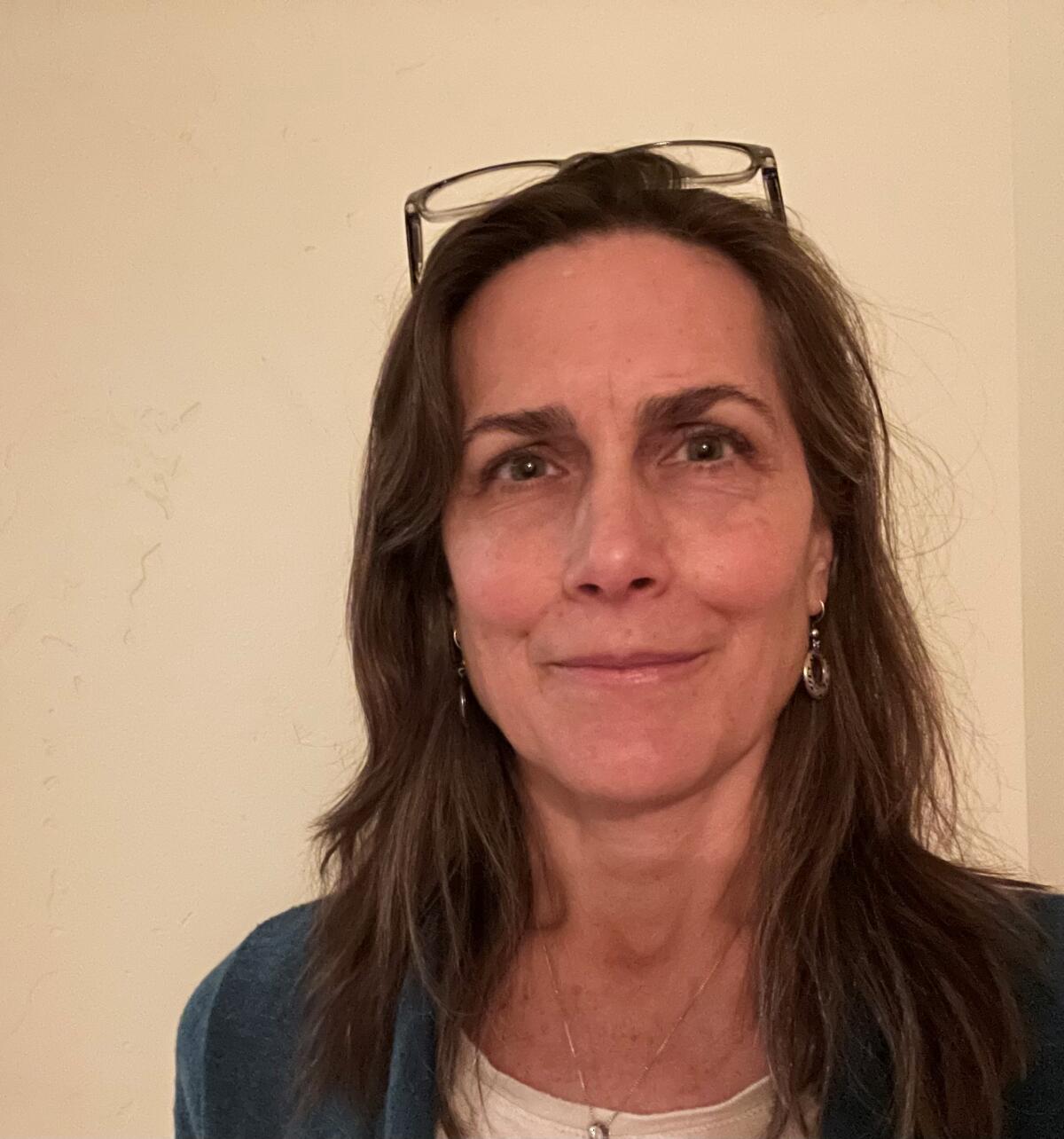
Eddy runs the Large-scale Solar Assn., a Sacramento trade group that represents and lobbies for the solar industry. Her member companies are tasked with building much of the machinery needed for California to reach 100% clean energy — a task that can be lucrative but also challenging. Almost anywhere you try to construct a solar farm in this state, someone will try to stop you.
Eddy is a fierce advocate for her industry — it’s her job — but she also cares deeply about solving the climate crisis, and doing it equitably. She reached out after reading my piece on the Nature Conservancy study, and told me she wanted to talk.
In her view, state and federal officials are making it far too difficult to build the solar panels and wind turbines needed to phase out coal, oil and gas — tipping the scales toward a future of mass extinctions and dire human health consequences.
The following transcript of our conversation has been edited and condensed for clarity.
**
Is “smart from the start” the right approach to accelerating the energy transition? If not, what does it miss?
Solar is a risk-averse industry. So mapping and protecting wildlife habitat and prime agricultural land can be useful. It helps the solar industry avoid proposing projects in those locations, where they might not get approved.
But one of the problems with “smart from the start” is it’s biased toward protecting values that can be mapped at a large scale. You don’t really get the granular detail you need to determine if a solar project is going to be viable at a particular site.
I worry these mapping exercises have created this false sense of hope, that somehow the energy transition will be simple and easy and obvious — don’t put solar projects here, put them over there instead. That kind of thinking is going to jeopardize our climate targets, because everybody’s going to oppose solar projects in their communities, thinking we can just put them somewhere else. And that’s not the case anymore. The easy sites have largely been taken.
So what’s missing from “smart from the start”? What factors aren’t getting considered that should be?
Transmission is one of the biggest things. When solar developers look for places to build, they look at where new power lines are planned or where existing lines have available capacity. You don’t have transmission, you don’t have a project.
The number of landowners at a project site is also a big deal. Only really large solar projects have the economies of scale to pay for the transmission upgrades often needed to connect to the grid. And larger projects require more land, which means you’ve got to negotiate deals with more landowners. For the most part, they’ve all got to say yes in order for that project to work.
What percentage of private landowners typically say yes?
About 10% to 20%, based on my conversations with companies.
And that’s one reason why you think there should be fewer barriers to building on public lands.
That’s right. And in the Western U.S., public lands represent about 50% of the total land. They’ve also got some of the best solar resources in the world.
The Biden administration has a goal of permitting 25,000 megawatts of renewable energy on public lands by 2025, which is good but not enough. Not when the U.S. needs to build at least 1 million megawatts of renewable energy — maybe more — in the next decade or two to keep global warming from getting out of control. We need about 1% of the total land surface of the United States devoted to utility-scale solar. We are talking about one of the largest shifts in land-use patterns in U.S. history.
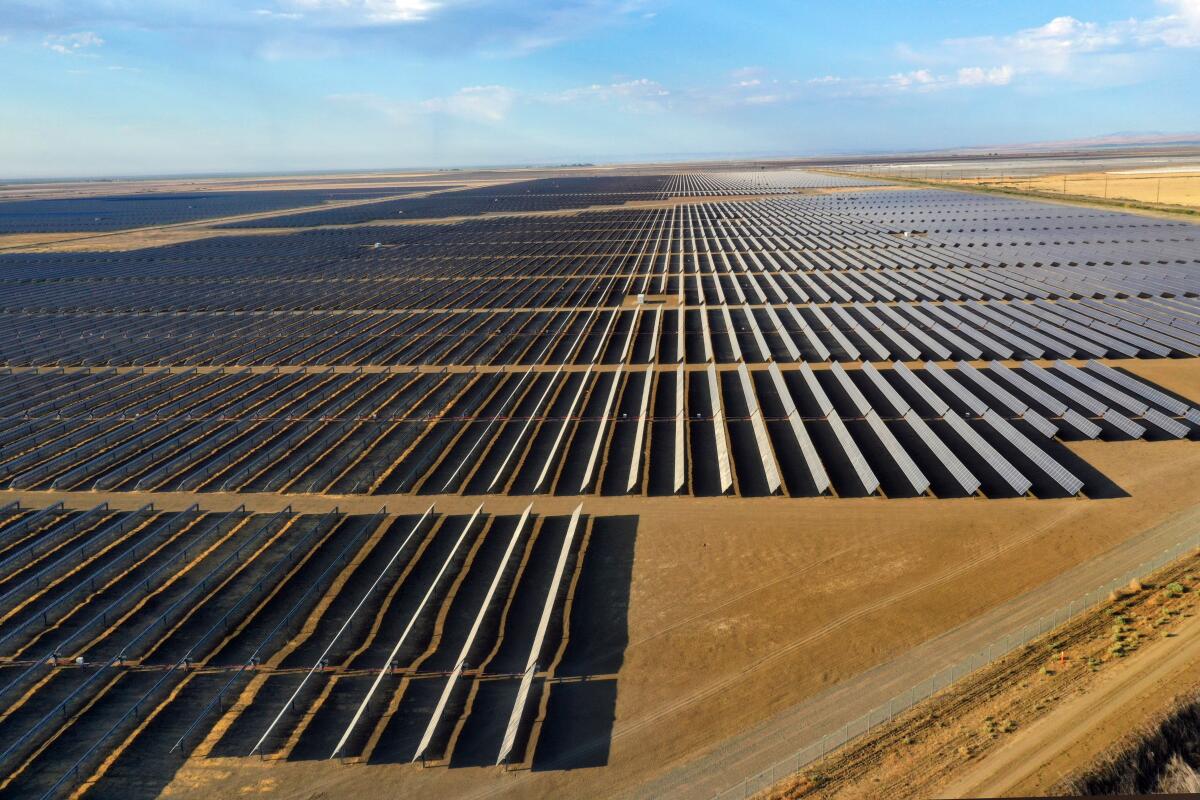
Is it really too hard to build on public lands right now? Dozens of solar and wind projects have gotten built, and many more are approved or going through federal permitting.
There’s more and more happening. But we’ve gotten off to a slow and somewhat difficult start.
A decade ago, the Obama administration released a plan that excluded solar on 79 million acres across six Western states and identified just 285,000 acres as solar zones. Then, in California, the federal government’s Desert Renewable Energy Conservation Plan came along. The truth is, that plan has facilitated streamlined permitting for a few solar projects, which was the intent. So that’s a good thing. But there also are some unintended consequences that have limited its usefulness.
Talk about some of those consequences. The California desert plan identified almost 400,000 acres as suitable for clean energy development — why can’t you just plop down solar farms in those spots?
First you have to rule out significant acreage within the development zones if it’s too far from transmission lines. So that immediately shrinks your available options.
The desert plan also included new restrictions called “conservation management actions.” There are more than 200 of them. They basically create buffer zones where you can’t build within a certain number of feet of certain species, mainly plant species. Let’s say your desired project site is close to microphyll woodlands. You have to move your project or shrink it, even if you’re in a dedicated development area.
The desert plan doesn’t really prepare us for the future. When it was approved, California had a 50% renewable energy goal on the books. That would have required about 25,000 megawatts of new development. Now we need six times that much.
There are good reasons to protect public lands — they include some of the best wildlife habitat left, not to mention some of America’s most treasured places. I get that negotiating with a long list of landowners can be challenging for a solar developer. But why can’t we work through that problem, and build most of our clean energy on private lands?
Local opposition is a big part of it. You run headlong into this tension where small-town constituents would like projects to be out where they can’t see them, and conservation groups would like projects closer to urban areas, to retain intact habitat. And so we’re running into a conflict-ridden conversation from the start.
San Bernardino County is an example. A few years ago, they prohibited solar on more than 1 million acres of private land — and that’s on top of the Desert Renewable Energy Conservation Plan ruling out millions of acres of public land in the county.
Is “smart from the start” land-use planning just the wrong way to get solar and wind farms built?
That’s a question I ask myself often. On the one hand, landscape-level planning is really a visionary approach. I do feel like it should work. The problem is that every time we have done it, it has failed to serve the purpose that it was designed for.
But it keeps getting proposed as a strategy. I feel a little bit like Charlie Brown with Lucy holding the football. The question is, can we do landscape-level planning in a way that serves renewable energy? Is it possible?
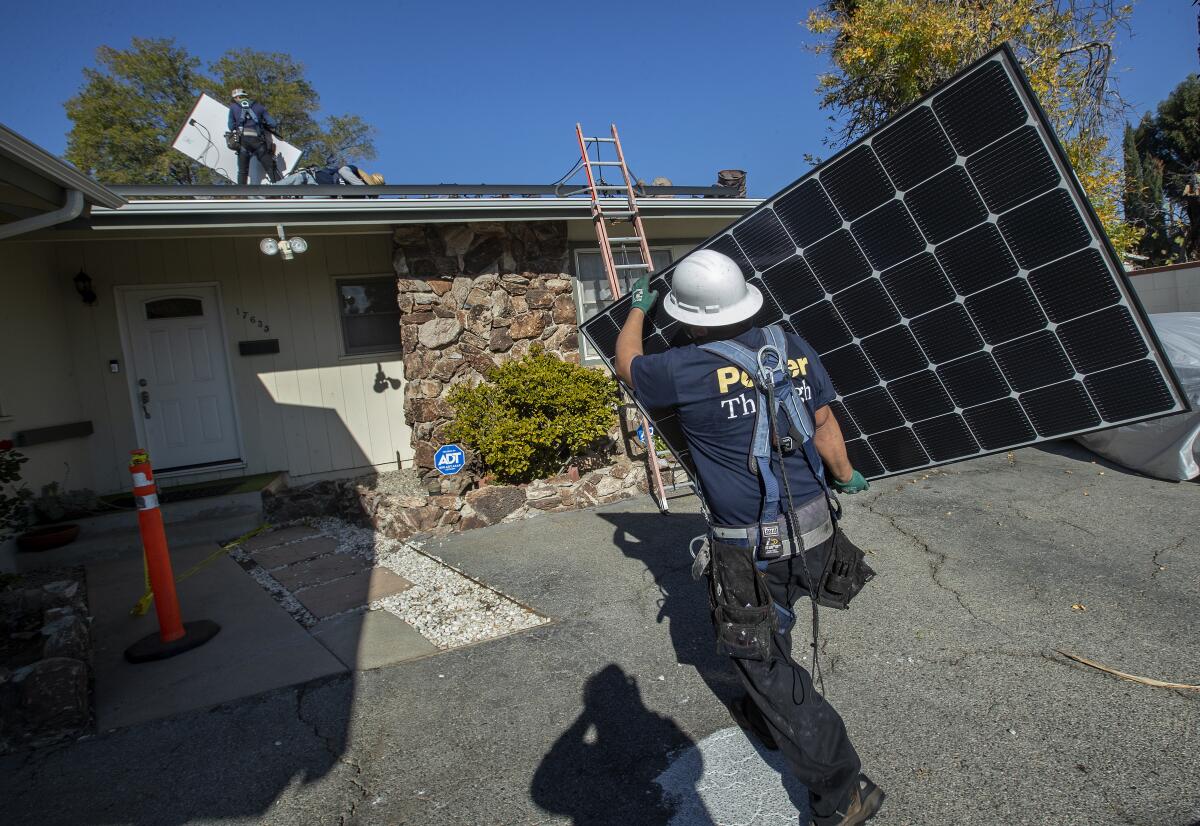
What would you say to people who are worried about climate change but think it’s silly to be talking about sprawling solar farms when we can put solar panels on rooftops, parking lots and warehouses?
I’d say do the math. It’s not possible to support an economy the size of California with rooftop solar alone, especially with our climate targets. We need all the rooftop and all the utility-scale solar that we can get. State officials are projecting a need for 33,000 megawatts of rooftop solar by 2045, on top of 70,000 megawatts of utility-scale solar.
And what about people who might be reading this conversation and thinking the solar industry sounds like every other industry, clamoring for fewer regulations and claiming it can serve our needs only without restrictions?
I totally understand and even share the reflexive mistrust of industry, generally. But I would say the business of renewable energy developers is to undo the harm done by the fossil fuel industry, which engaged in the biggest environmental cover-up in American history when it tried to deny the reality of climate change.
And beyond that, added restrictions don’t kill the solar industry. They just slow down projects and make them more expensive to build, which means higher costs will be passed through to utility customers. The delays also mean we keep running polluting gas plants for longer than we should. And so they don’t hurt the solar industry, but they do hurt everybody else.
It’s important to recognize that for every megawatt of solar built, we’re moving away from fossil fuels. We’re charging electric cars and powering electric homes with zero-emission power. Each megawatt is contributing to a healthier environment and healthier people. It’s reducing air pollution and mitigating climate change.
Do you really think it’s possible to bring people together — across urban and rural communities, and across political divides — to build the renewable energy we need? Or will finding places to build all these solar and wind farms inevitably come down to nasty political and legal battles that may or may not result in a livable climate?
These are the questions we are forced to ask ourselves. And we’re asking them against the backdrop of a declining quality of life for everybody. In California, people who are exposed to wildfire smoke every single summer are asking where they can go that climate change won’t affect them. And the answer is, there’s nowhere they can go where they won’t be affected.
I think the anger directed at solar projects hints at this underlying existential angst. We are losing our environment. We’re losing our water. We’re losing livable summers because it’s so hot. There’s so much tension, so much stress, and it’s easier to direct those feelings at something like a solar project than it is to step back and look at the magnitude of what we are facing as a species.
I lived in Palm Springs for four years, so I’m especially sympathetic to conservationists trying to protect the California desert. What would you say to people who love the desert for its beauty and wildlife, and see solar as a threat?
I’d say the only way we can protect iconic species is by saving all species. I often reflect on what the climate activist Bill McKibben told some of his environmental colleagues who were fighting a proposed wind farm in the Adirondacks, which he supported. He said even if we win every other battle, if we lose the climate change battle, nothing else will matter. And he’s right.
Our chances of success increase if we make these decisions together, if we make them collaboratively. It’s a microcosm of how we can address the climate imperative as a whole. If we don’t come together as a species, we will fail. That is as true in addressing the global climate imperative as it is in addressing how we get solar projects built on the ground.
**
And now, here’s what’s happening around the West:
TOP STORIES
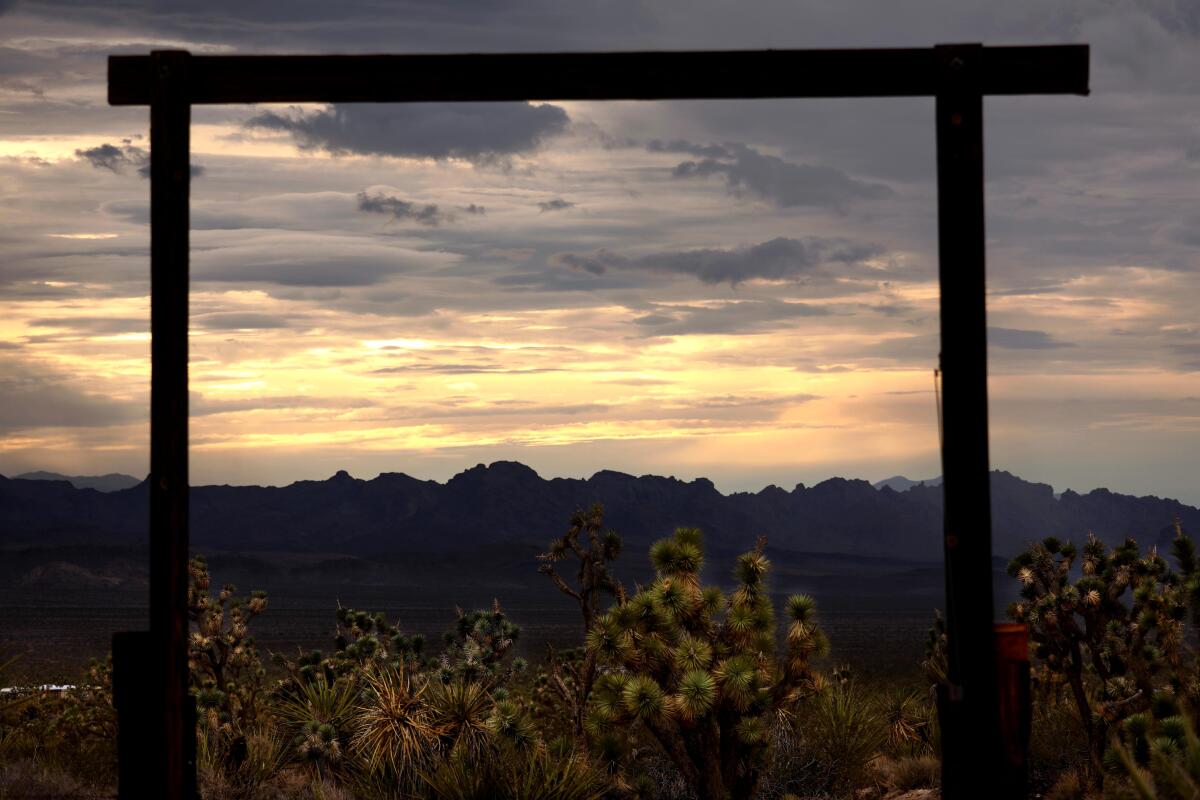
President Biden will use his executive authority to establish Avi Kwa Ame National Monument outside Las Vegas, protecting a vast desert landscape sacred to a dozen tribes and home to tortoises and other struggling wildlife. The area had been targeted for a wind farm, as the Nevada Independent’s Daniel Rothberg and Gabby Birenbaum note in their story on Biden’s announcement. My colleague Louis Sahagún visited the proposed monument earlier this year and wrote about what makes it so special. Still, it’s worth noting that a national monument designation doesn’t necessarily solve all problems. Just see this piece by the Las Vegas Review-Journal’s Sabrina Schnur, about Nevada’s Gold Butte National Monument. Eight years after Cliven Bundy’s actions spurred an armed standoff with federal agents, his cows are still grazing illegally on the monument.
Elsewhere in the desert, the Biden administration approved $250 million to limit dust pollution and restore wildlife habitat at the Salton Sea. The money comes from the Inflation Reduction Act, the climate bill approved by Congress this year, as The Times’ Ian James reports. It’s part of a deal that ensures wetlands can be built on federal lands surrounding the dying lake, and that also commits the Interior Department to help make sure there’s actually water for those wetlands. The Imperial Irrigation District approved the deal — but barely, with the agency’s directors voting 3 to 2 to accept the money, according to Janet Wilson at the Desert Sun.
“Big Oil is paying people to lie to the general public.” If you’re asked to sign a petition outside a grocery store in the next few weeks, tread carefully. In an astonishing story for Inside Climate News, Liza Gross reports that signature gatherers are telling people they’re trying to get a measure on the ballot that would ban oil drilling near homes and schools — when in fact, the ballot measure would overturn the drilling ban already approved by state lawmakers. Oil companies are paying millions of dollars to fund the signature-gathering campaign. Meanwhile, state officials held an all-day hearing to try to figure out why gasoline prices are so high — and California’s major oil refiners didn’t show up, Rob Nikolewski reports for the San Diego Union-Tribune.
AROUND THE WEST
“Not only was the event impossible without climate change — it was impossible with climate change. And of course, it happened, so that means that the model is wrong.” Remember last year’s searing heat storm in the Pacific Northwest, which left hundreds of people dead and fueled devastating fires? Well, new research concludes it was “so unprecedented it essentially broke most of the standard tools used to measure the human influence on heat waves,” The Times’ Hayley Smith writes.
On his way out the door, Arizona Gov. Doug Ducey is building an illegal border wall through Coronado National Monument — out of shipping containers. The makeshift barrier is probably doing more to block wildlife than humans, according to Caroline Tracey at High Country News. In another bizarre public lands dispute, a wealthy Wyoming landowner is suing several hunters who “corner crossed” to access public lands blocked by his ranch — and seeking millions of dollars in damages. The case could have major implications for the 15 million acres of “landlocked” public land in the U.S., Ben Ryder Howe reports for the New York Times.
The Biden administration is giving three tribes $25 million apiece to relocate key buildings to higher ground, away from rising seas and rivers. One of those tribes is the Quinault Indian Nation on Washington state’s Olympic Peninsula, which says the $25 million should cover one-quarter of the cost of its relocation project, the New York Times’ Christopher Flavelle writes. Northern California’s Yurok Tribe is one of several additional tribes getting a $5-million grant to plan for possible relocation.
WATER IN THE WEST
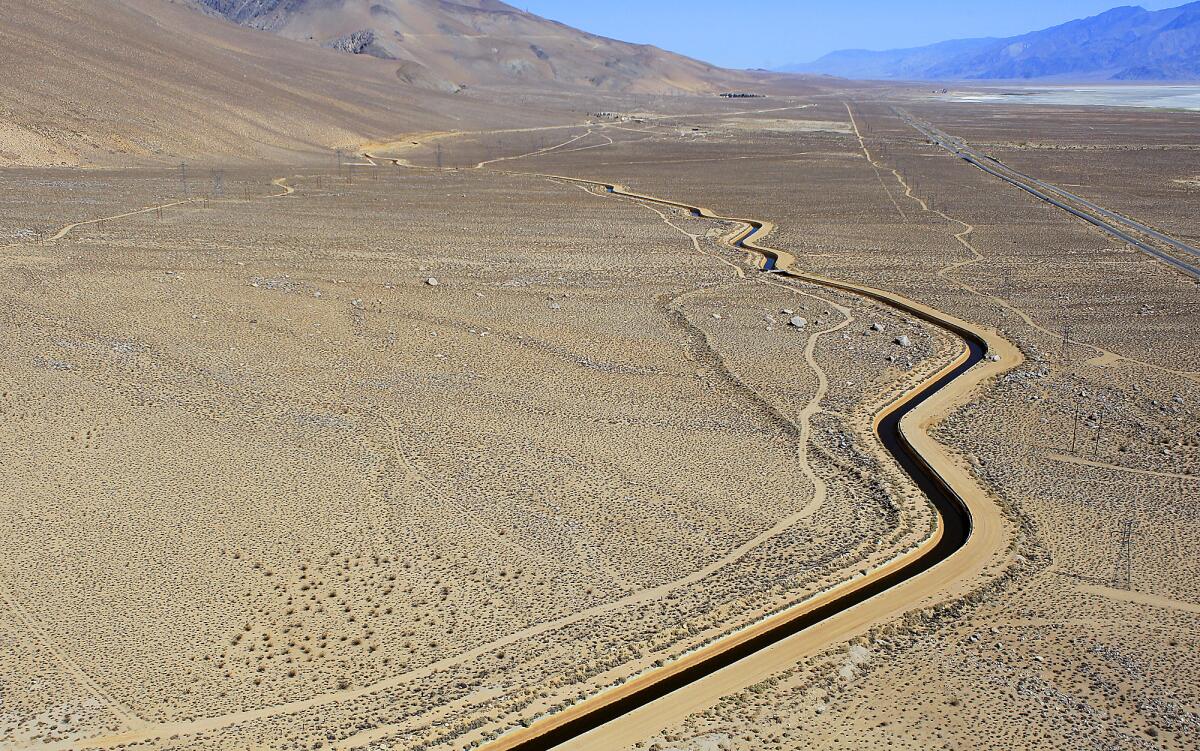
Nearly 20% of California water providers say they’ll need more aggressive conservation to make it through next year if drought persists. Details here from Hayley Smith. This isn’t necessarily cause for panic — but it is a reminder that we shouldn’t take it for granted when we turn on the kitchen faucet and clean water comes out. Rural and low-income communities are especially at risk of running out of water or receiving contaminated supplies. The Times’ Dorany Pineda wrote about why that’s the case.
California’s powerful Westlands Water District is getting a makeover, with Tom Birmingham announcing he’ll retire after 22 years as general manager. If he hadn’t decided to leave, he might have been ousted by a newly elected “change coalition” that won a majority on the agency’s board, Jim Guy reports for the Fresno Bee. In other farm water news, the Salt Lake Tribune’s Brian Maffly and Mark Eddington wrote a fascinating story on the economic and environmental value that alfalfa provides — and why there will still almost certainly need to be less of the crop. Two-thirds of Utah’s water is used to irrigate alfalfa and hay.
As if the West’s water situation weren’t bad enough, the spread of pink algae is melting mountain snowpack faster than usual. High Country News’ Kylie Mohr spent time at Montana’s Glacier National Park with researchers trying to figure out how bad the problem is, compared with more well-established threats such as rising temperatures and worsening drought. “If there’s going to be another factor that perpetuates earlier melt, that’s important,” one researcher said.
THE ENERGY TRANSITION
Officials in California and other Western states are preparing to vote on launching a “day-ahead” electricity market that supporters say would reduce climate pollution and limit costs to utility customers. Utility Dive’s Ethan Howland wrote about a new analysis commissioned by the California Independent System Operator finding the day-ahead market could save $1.2 billion a year across the Western power grid, helping consumers avoid higher electricity bills. If that all sounds like gibberish to you, check out my piece from last year on the benefits of California and neighboring states working together to share clean energy.
The California Public Utilities Commission approved $1 billion to help fund new electric vehicle charging stations. Seventy percent of the money will support chargers for electric trucks, with the rest going to chargers for passenger cars at or near apartment buildings, Rob Nikolewski reports for the San Diego Union-Tribune. In less-ideal news for clean transportation, San Diego County’s $160-billion plan to expand public transit and charge drivers for every mile traveled could be in trouble. A bunch of Republicans who oppose the plan got elected to local office, the San Diego Union-Tribune’s Joshua Emerson Smith writes.
A think tank funded in part by the fossil fuel industry is leading a campaign against offshore wind power — and trying to make their case seem progressive. The Texas Public Policy Foundation — which has gotten money from Charles Koch, Chevron, ConocoPhillips, ExxonMobil and others — is trying to persuade environmentally minded Americans that offshore wind turbines do more harm than good, per Emily Atkins of the Heated email newsletter and Michael Thomas of the Distilled newsletter. They write that the foundation is using a disinformation tactic called “woke-washing” — taking the language of the progressive climate movement and using it to try to fight clean energy and benefit fossil fuels.
ONE MORE THING
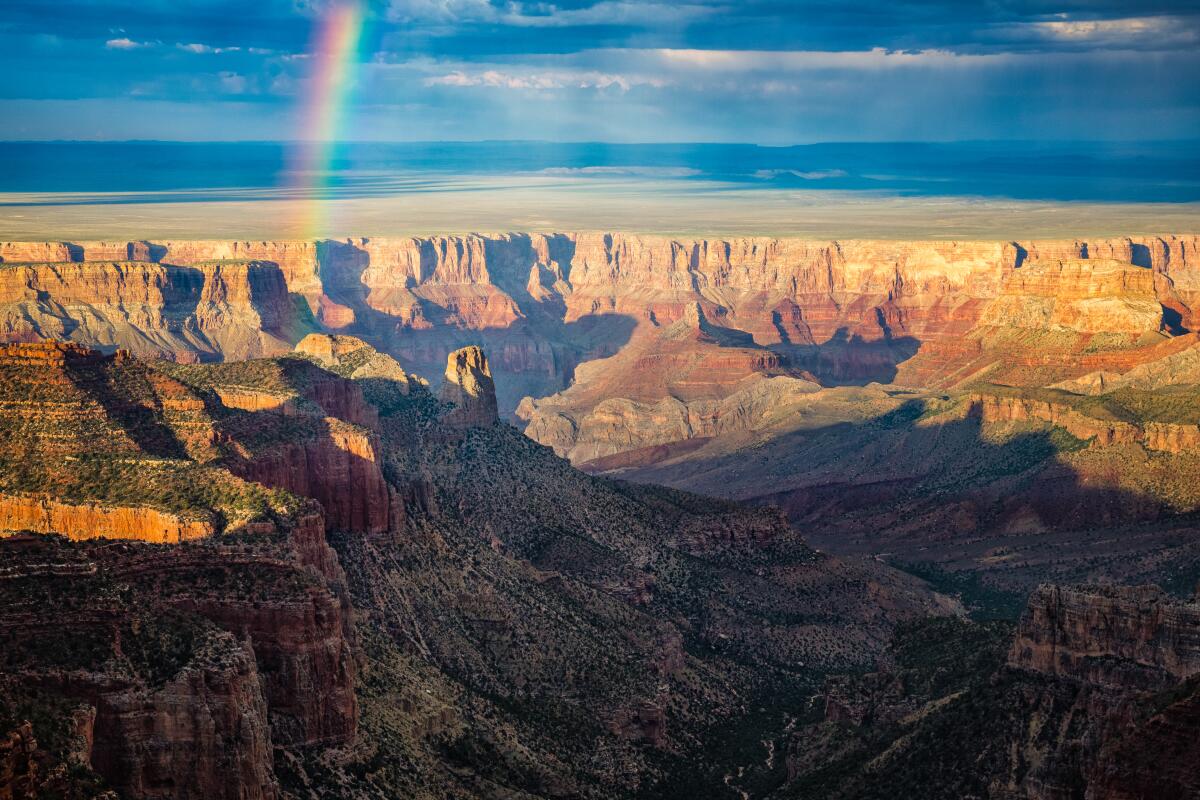
Let’s end with two pieces of cool public lands news.
First, Grand Canyon National Park’s Indian Garden area is being renamed. Federal officials forcibly removed Havasupai people from the area in the early 1900s, and the tribe saw the old name as offensive. “The renaming of this sacred place to Havasupai Gardens will finally right that wrong,” the tribe’s chairperson said, as reported by the Arizona Republic’s KiMi Robinson.
Second, more state and national parks are making all-terrain wheelchairs available to guests, so they can fully experience the great outdoors. “We want to create an unforgettable outdoor experience for everyone, not just for people who can walk,” one Minnesota parks official told the Washington Post’s Andrea Sachs and Natalie B. Compton.
More good news always welcome. Email me with suggestions.
We’ll be back in your inbox next week. If you enjoyed this newsletter, or previous ones, please consider forwarding it to your friends and colleagues. For more climate and environment news, follow me on Twitter @Sammy_Roth.
Toward a more sustainable California
Get Boiling Point, our newsletter exploring climate change, energy and the environment, and become part of the conversation — and the solution.
You may occasionally receive promotional content from the Los Angeles Times.




